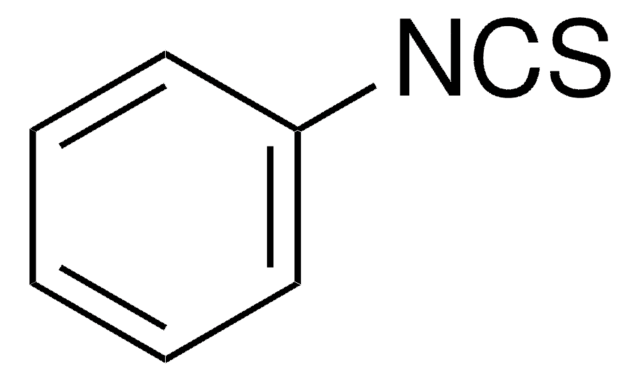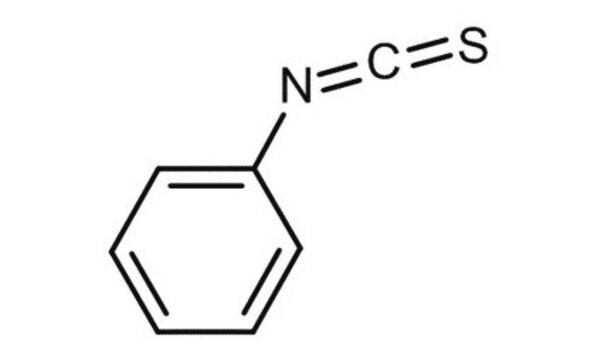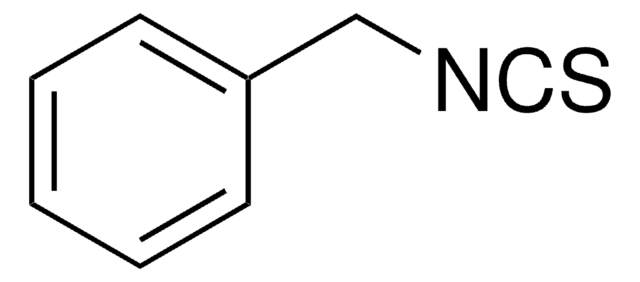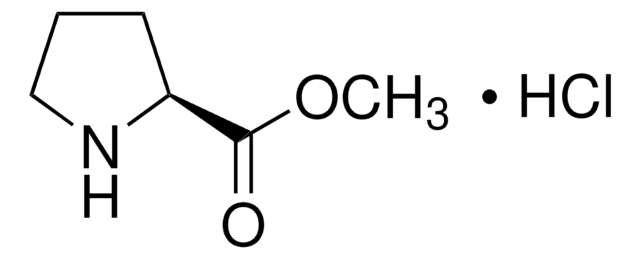P1034
Phenyl isothiocyanate
Sigma Grade, 8.36 M, suitable for solid phase protein sequencing analysis, ≥99% (GC), liquid
Synonyme(s) :
PITC
About This Item
Produits recommandés
Qualité
Sigma Grade
Niveau de qualité
Essai
≥99% (GC)
Forme
liquid
Concentration
8.36 M
Indice de réfraction
n20/D 1.6515 (lit.)
pb
218 °C (lit.)
Pf
−21 °C (lit.)
Densité
1.132 g/mL at 20 °C (lit.)
Adéquation
suitable for solid phase protein sequencing analysis
Température de stockage
2-8°C
Chaîne SMILES
S=C=Nc1ccccc1
InChI
1S/C7H5NS/c9-6-8-7-4-2-1-3-5-7/h1-5H
Clé InChI
QKFJKGMPGYROCL-UHFFFAOYSA-N
Vous recherchez des produits similaires ? Visite Guide de comparaison des produits
Description générale
Application
Conditionnement
Ten mL size packaged in screw cap amber vials under argon.
Mention d'avertissement
Danger
Mentions de danger
Classification des risques
Acute Tox. 3 Oral - Resp. Sens. 1 - Skin Corr. 1B - Skin Sens. 1
Code de la classe de stockage
6.1A - Combustible acute toxic Cat. 1 and 2 / very toxic hazardous materials
Classe de danger pour l'eau (WGK)
WGK 3
Point d'éclair (°F)
190.4 °F - closed cup
Point d'éclair (°C)
88 °C - closed cup
Équipement de protection individuelle
Faceshields, Gloves, Goggles, type ABEK (EN14387) respirator filter
Faites votre choix parmi les versions les plus récentes :
Déjà en possession de ce produit ?
Retrouvez la documentation relative aux produits que vous avez récemment achetés dans la Bibliothèque de documents.
Les clients ont également consulté
Notre équipe de scientifiques dispose d'une expérience dans tous les secteurs de la recherche, notamment en sciences de la vie, science des matériaux, synthèse chimique, chromatographie, analyse et dans de nombreux autres domaines..
Contacter notre Service technique













